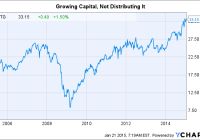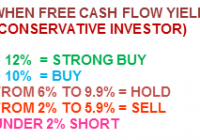Alts Pioneer Calamos Launches A Pair Of Alternative Mutual Funds
Calamos Investments was one of the first firms to launch a liquid alts product in the early 1990s, and the firm maintains its tradition as a trailblazer in the industry with the recent launch of two alternative mutual funds: The Calamos Global Convertible Fund and the Calamos Hedged Equity Income Fund, both of which “leverage core competencies of the firm,” according to a statement issued by Calamos. “These new funds are a logical extension of our product suite,” said John Calamos Jr, CEO and co-CIO of Calamos Investments: We have managed global convertible strategies for institutional clients for 20 years, and have managed U.S. convertibles for more than 35 years. Additionally, we were an early leader in the liquid alternatives space. Both funds were launched on December 31, 2014, and join the lineup of other Calamos convertible and alternative mutual funds, including the following: Calamos Convertible Fund (MUTF: CCVIX ) – A $1.3 billion fund that was launched in June 1985 and focuses on the U.S. convertible bond market. Calamos Long/Short Fund (MUTF: CALSX ) – A $57 million long/short equity fund with a focus on the U.S. equity market. The fund was launched in June 2013. Calamos Market Neutral Income Fund (MUTF: CVSIX ) – A $4.2 billion fund that started in September 1990 and aims to maintain a low correlation to the U.S. equity and fixed income markets while generating income through covered call writing and convertible arbitrage strategies. The two new funds will be managed by portfolio management teams led by John Calamos, Sr., Chief Executive Officer and Global Co-CIO, and Gary Black, Executive Vice President and Global Co-CIO. Global Convertible Fund The Calamos Global Convertible Fund blends global investment themes and fundamental research, providing broadly diversified exposure to the global convertible bond universe. The fund seeks to provide upside participation in equity markets with less exposure to downside than an equity-only portfolio over a full market cycle. According to Calamos, the fund can also serve a role within a fixed income allocation, as convertibles have historically performed well during periods of rising interest rates and inflation. The fund is available in five different share classes (A Shares: CAGCX ; C Shares: CCGCX ; R Shares: CRGCX ; I Shares: CXGCX ), has a management fee of 0.85% and expense ratios of 1.35%, 2.10%, 1.60%, and 1.10%, respectively. Further information can be found on the fund’s website . Hedged Equity Income Fund The Calamos Hedged Equity Income Fund invests in a diversified portfolio of stocks and sells options with the aim of generating income while participating in equity market upside with lower volatility over the long term. The Calamos Hedged Equity Income Fund is also available in four share classes ((A Shares: CAHEX ; C Shares: CCHEX ; R Shares: CRHEX ; I Shares: CIHEX ), has a management fee of 0.75% and expense ratios of 1.25%, 2.00%, 1.50% and 1.00%, respectively. Further information can be found on the fund’s website .

